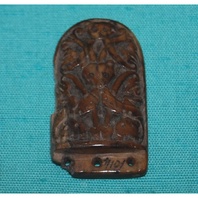
Viking Objects
Belt Terminal (L.A67.1864.3.0)
A belt terminal in an Anglo-Scandinavian zoomorphic style that was found in Leicester. It features two opposed ‘lions’, two central masks and acanthus scrolls. Strap ends or belt terminals came in various styles and were fairly common throughout the Viking world. They were used to decorate the ends of belts and to stop them getting damaged.
Read More
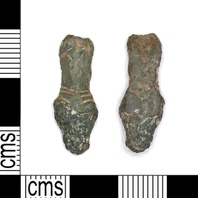
Viking Objects
Anglo-Scandinavian Strap-End (LEIC-1DD0CD)
This copper-alloy strap-end fragment is decorated in an Anglo-Scandinavian style consisting of a triangular cross-sectioned shaft which terminates in a triangular-shaped animal head. It is classed as a Thomas Class B, Type 4 strap-end which were introduced during the later eighth or early ninth century and remained popular into the eleventh century.
Read More
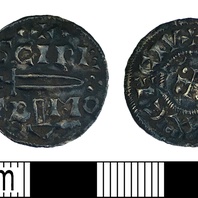
Viking Objects
Silver Viking Penny (DENO-FCA770)
This is a silver penny of a type know as the St Peter Sword/Cross type which bears an inscription to St Peter of York (c. 905-927) and was minted at York between 921 and 927. Viking rulers in the Danelaw eventually took up the Anglo-Saxon practice of minting coins which helped legitimise their authority.
Read More
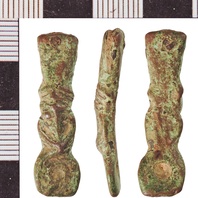
Viking Objects
Zoomorphic Strap-End (NLM-09BBD5)
This cast zoomorphic strap-end has been classified as Thomas Class G and contains decoration consisting of a heart-shaped muzzle, small pellet eyes, and angular grooves which may represent brows. Strap-ends came in various styles and were fairly common throughout the Viking world. They were used to decorate the ends of belts and to stop them getting damaged.
Read More

Viking Names
Bretby
The first element of Bretby, in the Repton and Gresley Hundred of Derbyshire, comes from either the Old Norse ethnonym Bretar ‘Britons’ or its Old English cognate, Brettas. The second element of the place-name is Old Norse bý ‘a farmstead, a village’. Traditionally, the place-name has been interpreted as referring to Britons who accompanied the Scandinavians in their settlements. However, the exact implications of such a name are not yet fully understood and are the subject of ongoing work by Dr Jayne Carroll of the Institute for Name-Studies, University of Nottingham.
Read More
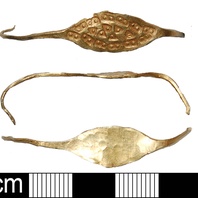
Viking Objects
Gold Finger-Ring (BH-59ECD3)
An Anglo-Scandinavian gold finger-ring decorated with a punched a lozenge-shaped pattern of six triangles with central dots, surrounded by a circumferential band of punched rectangles with two dots. The ends of the wires are hooked, showing that they would originally have been twisted together. Rings like this with knotted ends are typically Scandinavian.
Read More
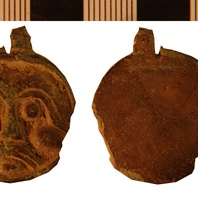
Viking Objects
Copper-Alloy Disc Pendant (NLM-0CA344)
This cast copper-alloy disc pendant has an anthropomorphic design which portrays a facing moustachioed mask. A dark grey coating on front and back may be the degraded remains of a silvered surface. Pendants were a popular dress accessory in Norway and Sweden and sometimes were worn with beads between a pair of oval brooches. For more information on Scandinavian jewellery in England check out our blog: Brooches, Pendants and Pins: Scandinavian Dress Accessories in England.
Read More
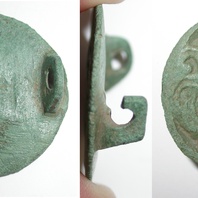
Viking Objects
Borre Style Brooch (DENO-805B20)
This copper-alloy brooch is an example of Kershaw’s East Anglian series and is decorated with interlaced Borre-style designs. For more information on Scandinavian jewellery in England check out our blog: Brooches, Pendants and Pins: Scandinavian Dress Accessories in England.
Read More
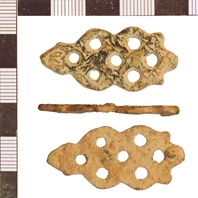
Viking Objects
Anglo-Scandinavian Mount (NLM-491EBD)
This copper-alloy mount is decorated with an openwork plate interlace ornamentation in possible Borre style.
Read More
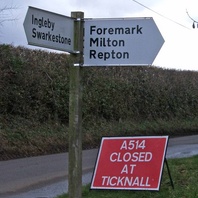
Viking Names
Ingleby
Ingleby, in the Repton and Gresley Hundred of Derbyshire, takes its name from the Old English ethnonym Engle ‘the Angles, later the English’ and Old Norse by ‘a farmstead, a village’. There is also an Ingleby in Lincolnshire (historically Yorkshire). This Ingleby is close to the Viking winter camp at Repton, and the site of a unique Viking Age cremation cemetery. The exact implications of such a name are not yet fully understood and are the subject of ongoing work by Dr Jayne Carroll of the Institute for Name-Studies, University of Nottingham.
Read More
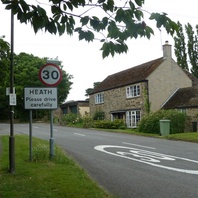
Viking Names
Heath
The eatlier name for Heath, in the Scarsdale Hundred of Derbyshire, was Lund from Old Norse lundr ‘grove, small grove’. Heath from Old English hǣð ‘heather; a tract of uncultivated land’ replaced the older name which remains only as a field name.
